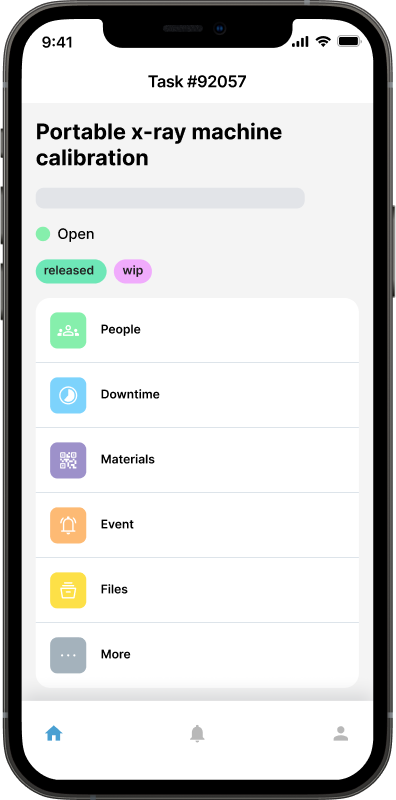Common Misconceptions about CMMS

Efficient Maintenance Processes
The efficient management of assets and maintenance processes is vital for any organization. Computerized Maintenance Management Systems (CMMS) and Work Order Management Software have emerged as powerful tools to streamline these operations. However, there are several misconceptions surrounding CMMS that can hinder organizations from fully harnessing their potential.
In this blog, we will delve deeper into these misconceptions and shed light on the true capabilities of CMMS and Work Order Management Software.
#1: CMMS is Only for Large Enterprises
One common misconception about CMMS is that it's exclusively meant for large enterprises with extensive maintenance needs. In reality, CMMS can benefit organizations of all sizes. Small businesses can use CMMS to efficiently manage their equipment, track maintenance history, and reduce downtime, just like their larger counterparts.
CMMS often proves even more advantageous for smaller businesses, as it allows them to compete on a level playing field by optimizing their maintenance operations. By preventing breakdowns, minimizing unplanned downtime, and efficiently managing resources, CMMS can significantly improve the bottom line of small and medium-sized enterprises.
#2: CMMS is Expensive and Complicated
Some believe that implementing a CMMS is a costly and complex endeavor. While there may be an initial investment, the long-term benefits far outweigh the costs. Modern CMMS solutions are user-friendly and scalable, making them accessible to businesses with varying budgets and technical expertise.
Furthermore, the return on investment (ROI) for CMMS can be substantial. By reducing emergency repairs, extending the lifespan of equipment, and optimizing labor costs, CMMS pays for itself over time. The simplicity and adaptability of modern CMMS platforms make them accessible to a wide range of industries, including those that may have once considered the cost prohibitive.
#3: CMMS Replaces Human Workers
CMMS is often wrongly perceived as a tool that aims to replace maintenance personnel. In reality, CMMS is designed to enhance the efficiency of maintenance teams. It automates routine tasks, allowing technicians to focus on more complex and value-added activities, ultimately improving overall productivity.
Rather than replacing workers, CMMS empowers them. It equips maintenance teams with valuable data, work order management tools, and predictive analytics to make informed decisions. This shift from reactive to proactive maintenance not only reduces stress on personnel but also improves job satisfaction as technicians can take on more strategic and impactful roles within the organization.
#4: CMMS is Only for Maintenance
Another misconception is that CMMS is solely for maintenance departments. In truth, CMMS can be integrated across departments, such as procurement, inventory management, and asset tracking, providing a holistic view of an organization's operations.
By breaking down silos between departments, CMMS fosters collaboration and transparency. For example, procurement teams can use CMMS data to make informed decisions about spare parts and inventory management, while facilities management can ensure that assets are operating optimally. This cross-functional approach enhances the overall efficiency and effectiveness of the entire organization.
#5: CMMS is Only for Manufacturing
It's a common belief that CMMS is tailored exclusively for manufacturing industries. However, CMMS can be applied in various sectors, including healthcare, education, hospitality, and facilities management, to improve equipment reliability and reduce operational costs.
In healthcare, for instance, CMMS plays a critical role in ensuring that medical equipment is properly maintained, helping healthcare facilities comply with regulatory standards, and improving patient safety.
#6: CMMS is Difficult to Implement

Many organizations hesitate to adopt CMMS due to concerns about the complexity of implementation. Modern CMMS providers offer user-friendly, cloud-based solutions that streamline the setup process, making it more straightforward and efficient.
The implementation process typically involves initial data migration, system configuration, and user training.
#7: CMMS is Only for Reactive Maintenance
CMMS is often associated with reactive maintenance, where repairs are made after equipment failure. However, CMMS can also support preventive and predictive maintenance strategies, helping organizations reduce unexpected downtime and extend the lifespan of their assets.
Preventive maintenance involves scheduled inspections and maintenance tasks to prevent breakdowns, while predictive maintenance uses data analytics and condition monitoring to identify issues before they become critical. CMMS is a versatile tool that can accommodate both approaches, allowing organizations to choose the strategy that best suits their needs and goals.
#8: CMMS is a One-Time Solution
CMMS is not a one-time fix; it's an ongoing process. Continuous data input, analysis, and improvement are essential for maximizing the benefits of CMMS and Work Order Management Software. Regular updates and adjustments ensure that the system remains aligned with an organization's evolving needs.
Furthermore, CMMS evolves alongside technological advancements. New features, integrations, and capabilities are regularly introduced to keep pace with changing maintenance and asset management requirements. Therefore, organizations should view CMMS as a dynamic tool that continually enhances operational efficiency and helps them stay competitive in their respective industries.
CMMS and Work Order Management Software are invaluable tools that can transform an organization's maintenance and asset management practices. To fully leverage these solutions, it's crucial to dispel the common misconceptions that might deter their adoption. CMMS is not just for large enterprises; it's not prohibitively expensive, and it certainly doesn't replace human workers. Instead, it empowers organizations of all sizes to optimize their operations, reduce downtime, and maximize efficiency.
Consider implementing CMMS in your organization and witness the positive impact it can have on your maintenance processes. CMMS and Work Order Management Software are key to the future of efficient asset management and maintenance in businesses of all sizes and industries.

